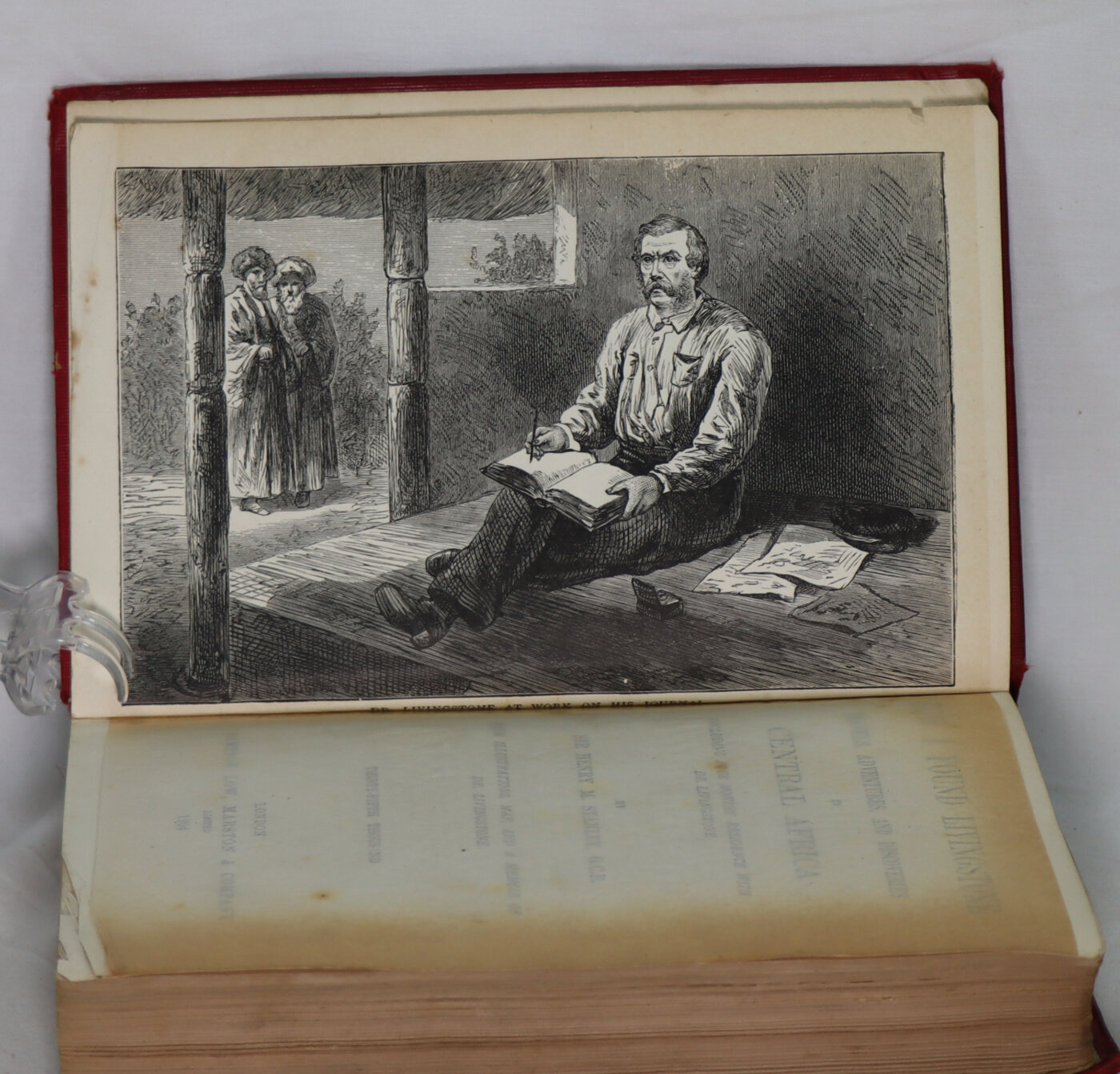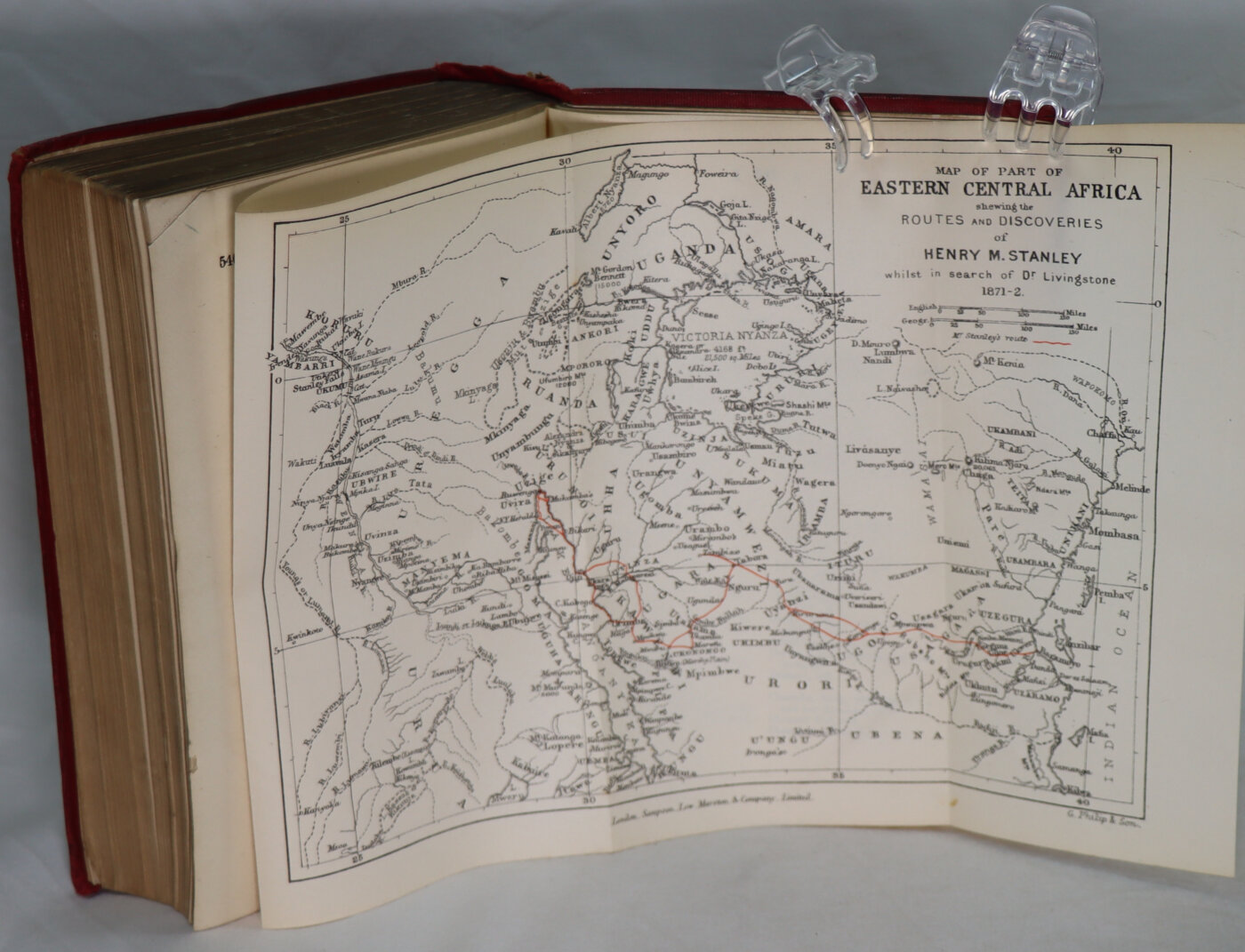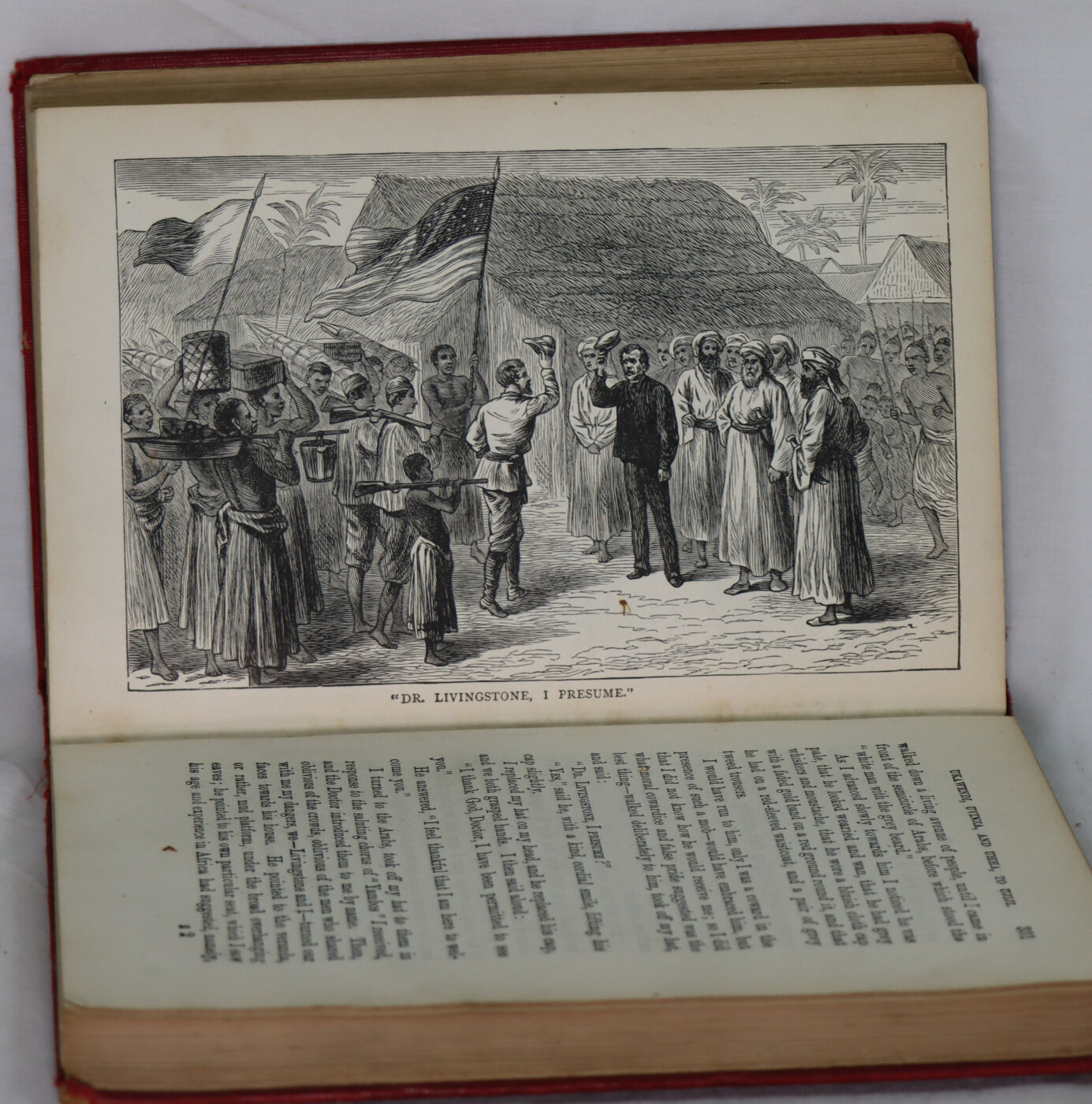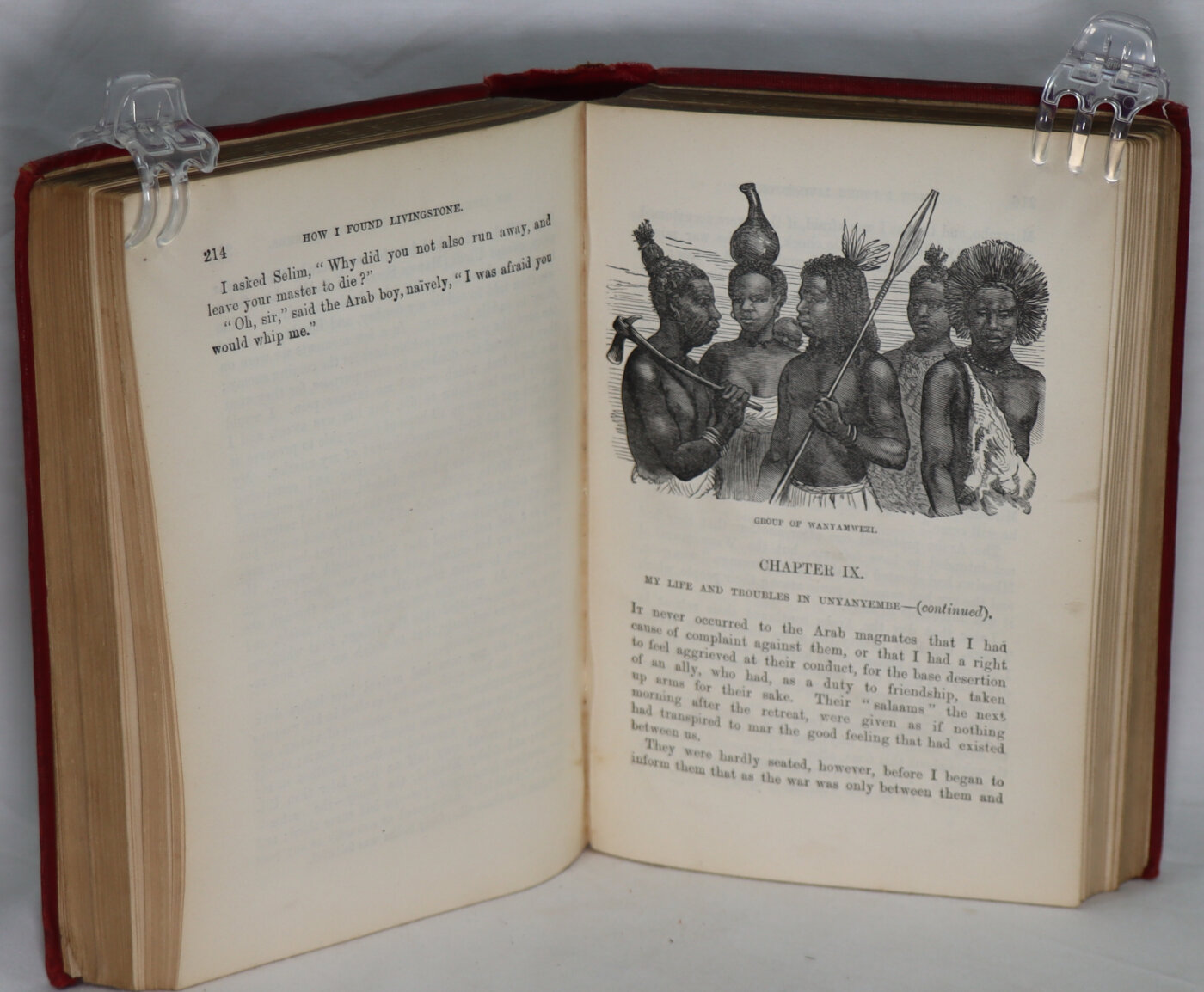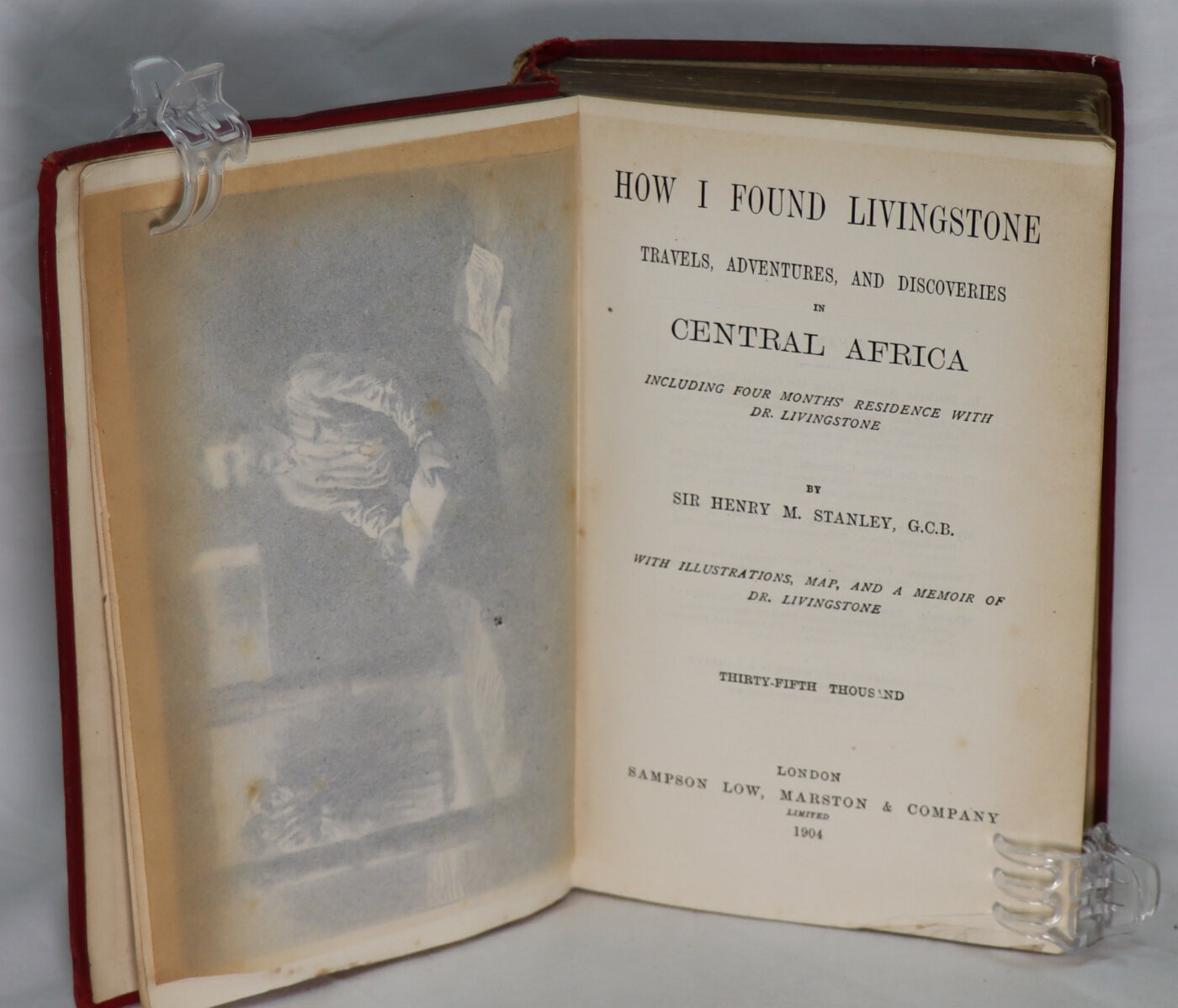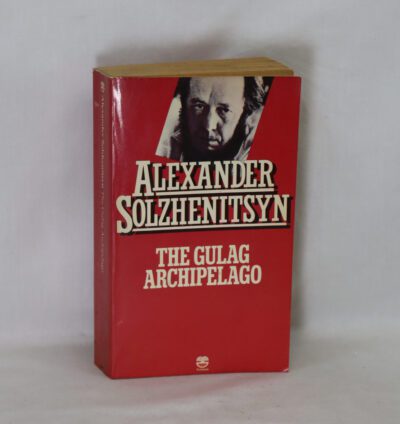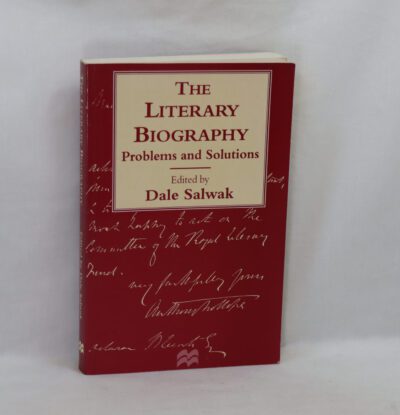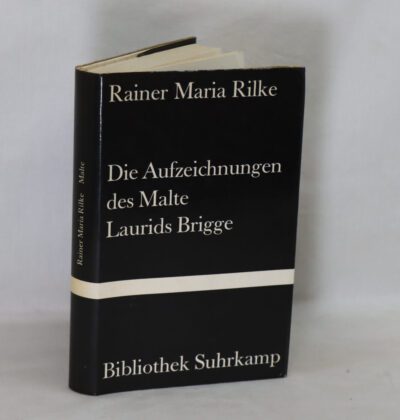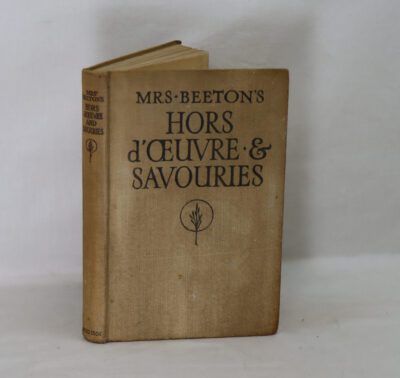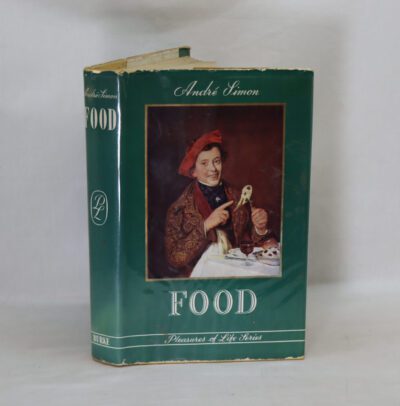How I Found Livingstone in Central Africa.
By Henry M Stanley
Printed: 1904
Publisher: Sampson Low Marston & Co. London
| Dimensions | 14 × 19 × 4 cm |
|---|---|
| Language |
Language: English
Size (cminches): 14 x 19 x 4
Condition: Very good (See explanation of ratings)
Item information
Description
Maroon cloth binding with gilt title and decoration.
-
F.B.A. provides an in-depth photographic presentation of this item to stimulate your feeling and touch. More traditional book descriptions are immediately available.
-
Note: This book carries the £5.00 discount to those that subscribe to the F.B.A. mailing list.
Hardcover. Condition: Fair. No Jacket. Octavo in maroon-colored, pictorial cloth binding. B&W illustrations; maps. Condition: upper corners of binding lightly bumped; minor wear & soiling to binding; else a fair to good copy. 736 pages.
Sir Henry Morton Stanley GCB (born John Rowlands; 28 January 1841 – 10 May 1904) was a Welsh-American explorer, journalist, soldier, colonial administrator, author and politician who was famous for his exploration of Central Africa and his search for missionary and explorer David Livingstone. Besides his discovery of Livingstone, he is mainly known for his search for the sources of the Nile and Congo rivers, the work he undertook as an agent of King Leopold II of the Belgians which enabled the occupation of the Congo Basin region, and his command of the Emin Pasha Relief Expedition. He was knighted in 1897, and served in Parliament as a Liberal Unionist member for Lambeth North from 1895 to 1900.
More than a century after his death, Stanley’s legacy remains the subject of enduring controversy. Although he personally had high regard for many of the native African people who accompanied him on his expeditions, the exaggerated accounts of corporal punishment and brutality in his books fostered a public reputation as a hard-driving, cruel leader,in contrast to the supposedly more humanitarian Livingstone. His contemporary image in Britain also suffered from the inaccurate perception that he was American. In the 20th century, his reputation was also seriously damaged by his role in establishing the Congo Free State for King Leopold II. Nevertheless, he is recognised for his important contributions to Western knowledge of the geography of Central Africa and for his resolute opposition to the slave trade in East Africa.
David Livingstone FRGS FRS (19 March 1813 – 1 May 1873) was a Scottish physician, Congregationalist, pioneer Christian missionary with the London Missionary Society, and an explorer in Africa. Livingstone was married to Mary Moffat Livingstone, from the prominent 18th-century Moffatt missionary family. Livingstone came to have a mythic status that operated on a number of interconnected levels: Protestant missionary martyr, working-class “rags-to-riches” inspirational story, scientific investigator and explorer, imperial reformer, anti-slavery crusader, and advocate of British commercial and colonial expansion. As a result, Livingstone became one of the most popular British heroes of the late 19th-century Victorian era.
Livingstone’s fame as an explorer and his obsession with learning the sources of the Nile River was founded on the belief that if he could solve that age-old mystery, his fame would give him the influence to end the East African Arab–Swahili slave trade. “The Nile sources”, he told a friend, “are valuable only as a means of opening my mouth with power among men. It is this power [with] which I hope to remedy an immense evil.” His subsequent exploration of the central African watershed was the culmination of the classic period of European geographical discovery and colonial penetration of Africa. At the same time, his missionary travels, “disappearance”, and eventual death in Africa—and subsequent glorification as a posthumous national hero in 1874—led to the founding of several major central African Christian missionary initiatives carried forward in the era of the European “Scramble for Africa”.
Condition notes
Want to know more about this item?
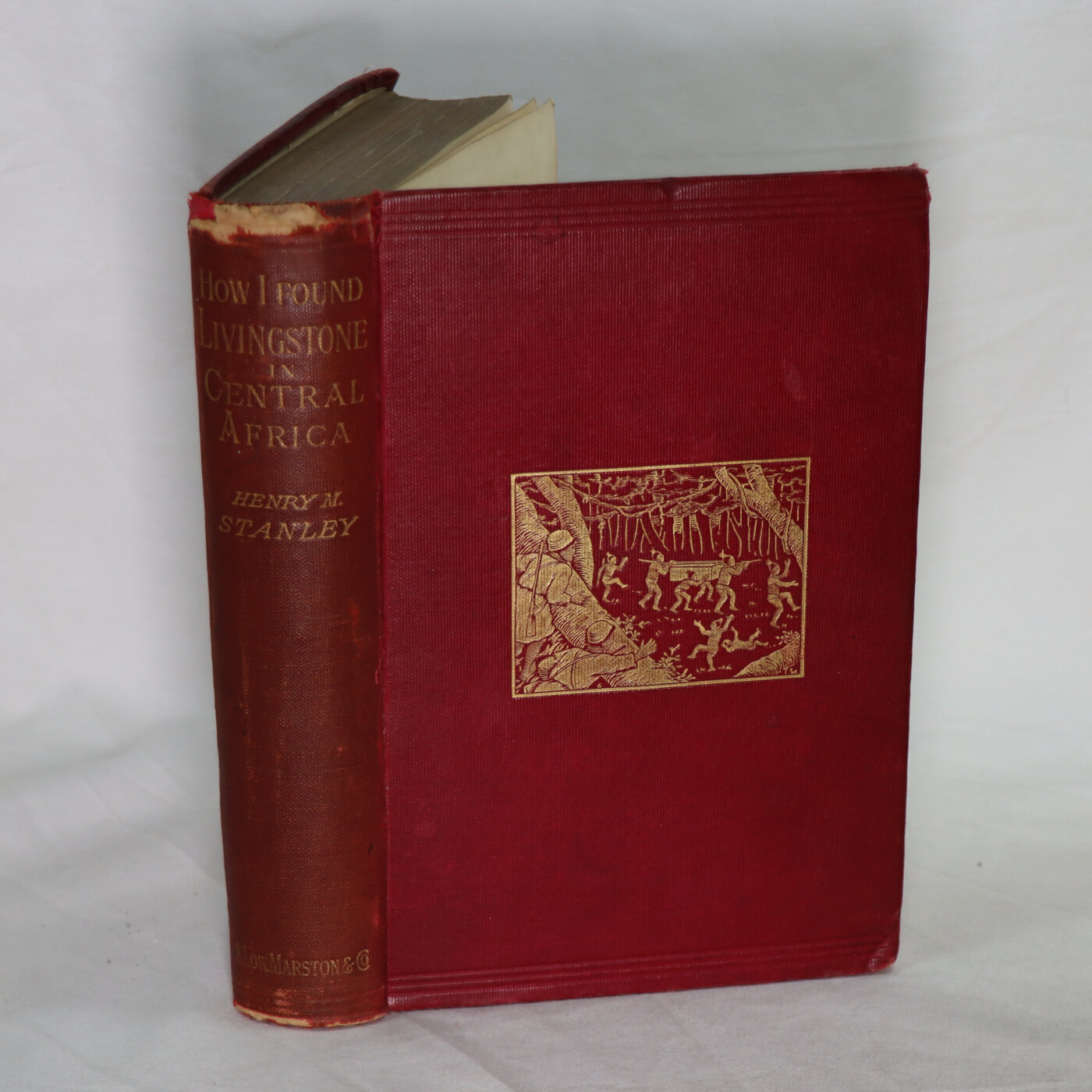
Share this Page with a friend

